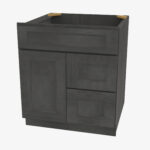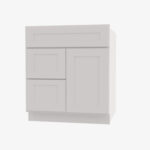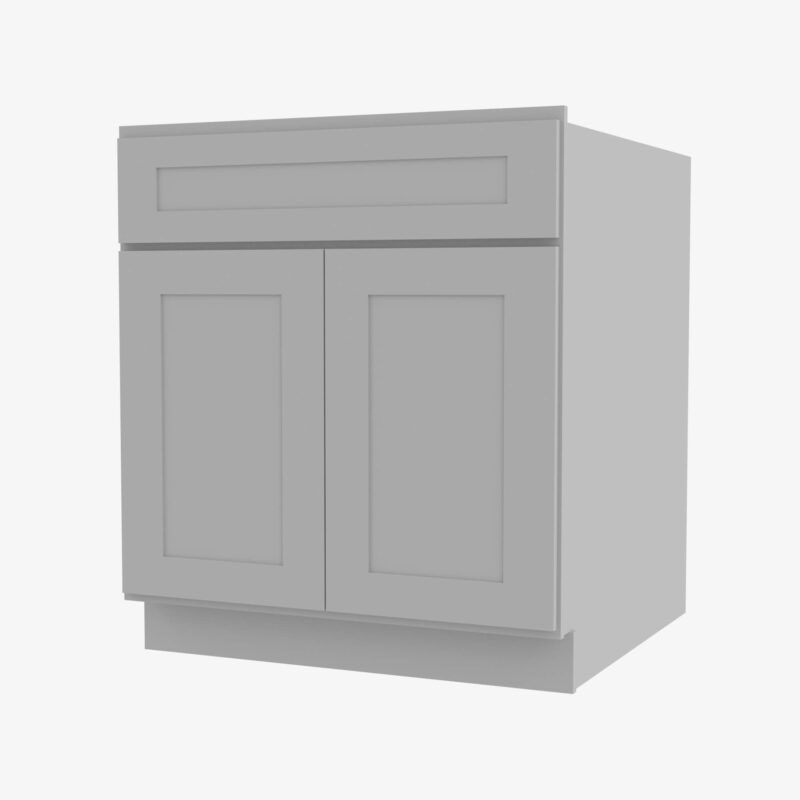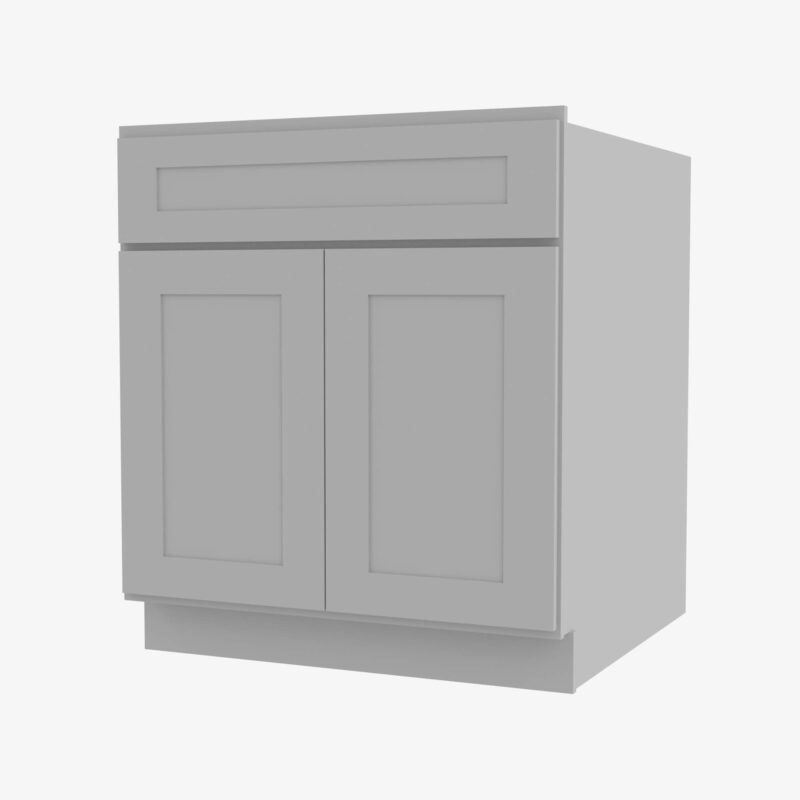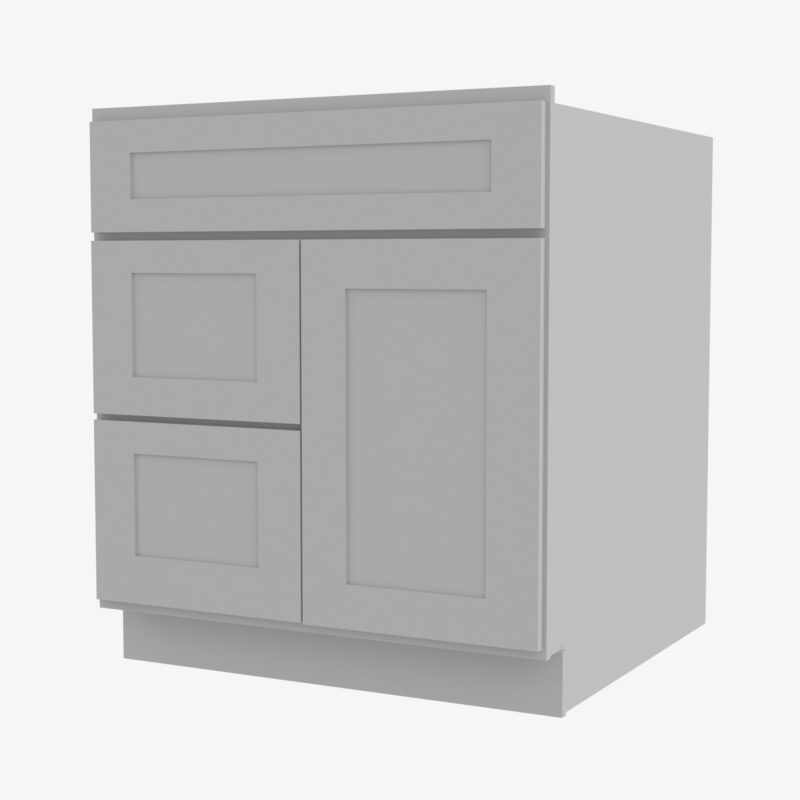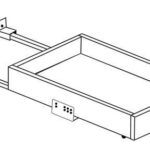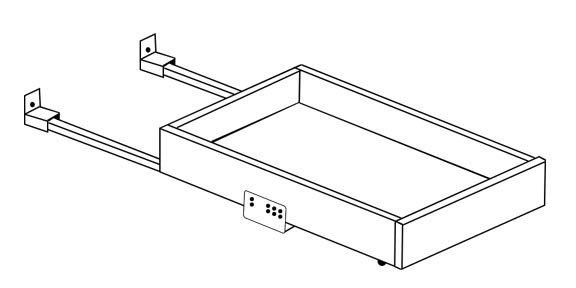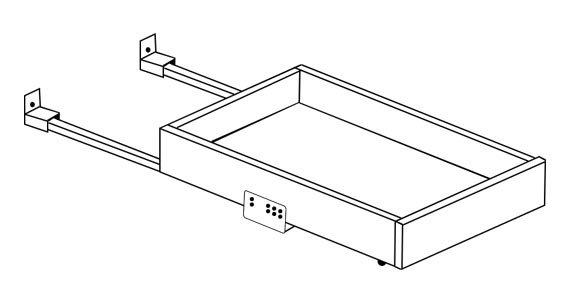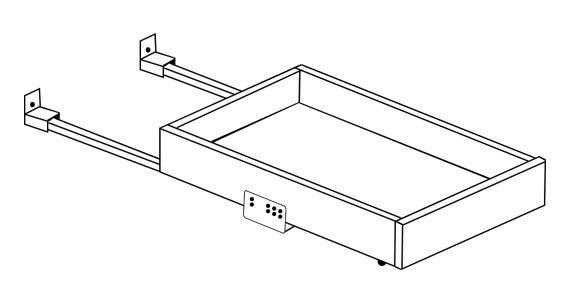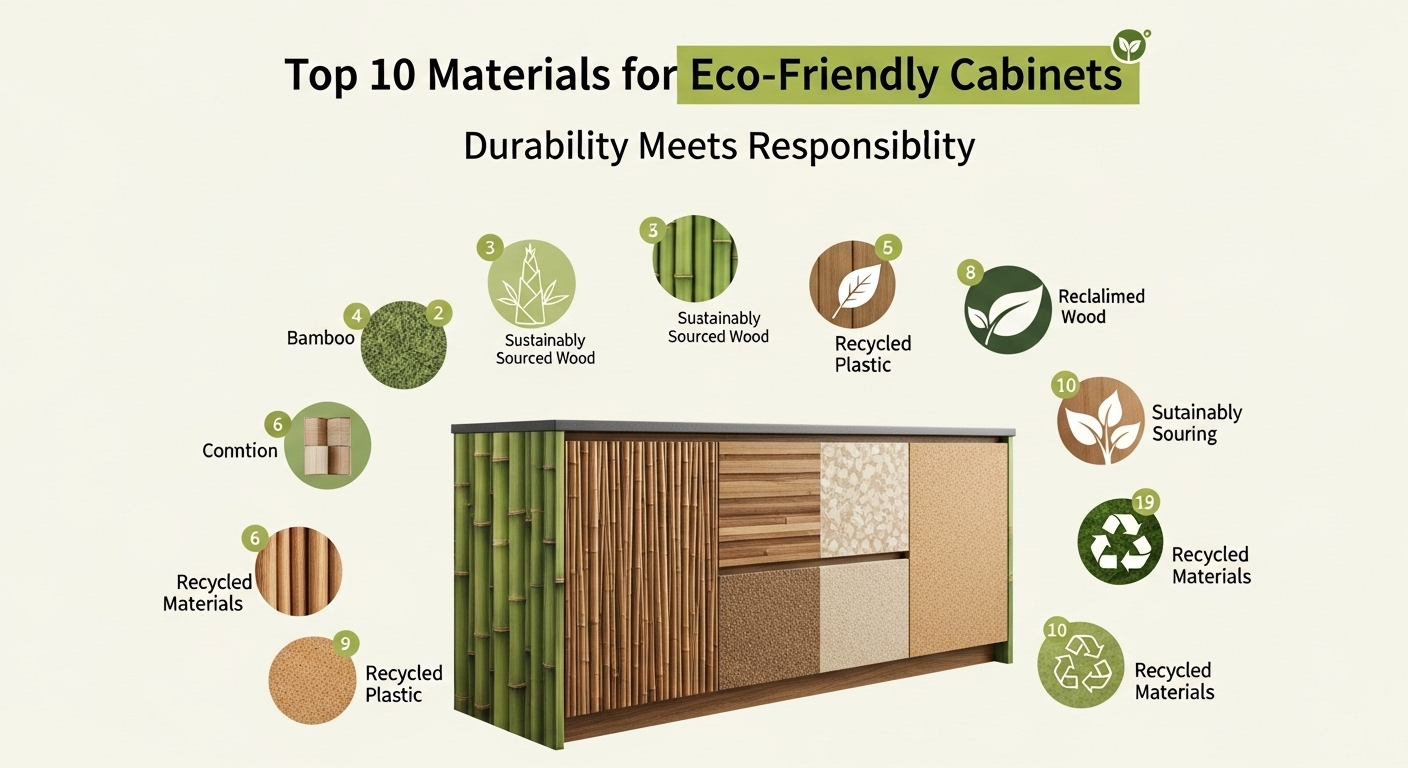As we navigate the world of home design, it’s essential to embrace choices that reflect our values, particularly when it comes to sustainability. Creating eco-friendly cabinets can dramatically impact our environment while still providing the durability we need in our homes. In this post, we’ll explore the Top 10 Materials for Eco-Friendly Cabinets, combining style and responsibility. By selecting the right materials, we not only enhance our living spaces but also contribute positively to the planet. Let’s dive in and discover how we can build a greener future together!
Main Points
- Understanding the benefits of eco-friendly materials for cabinetry.
- Highlighting sustainable hardwood options for durability.
- Exploring reclaimed wood as a charming and responsible choice.
- Examining bamboo’s rapid growth and strength.
- Learning about plywood’s versatility and eco-friendliness.
- Investigating the advantages of particleboard made from recycled materials.
- Recognizing the appeal of cork and its natural insulation properties.
- Looking into metals that are recyclable and long-lasting.
- Evaluating the use of low-VOC finishes for healthier environments.
- Understanding how eco-friendly cabinets can elevate home aesthetics.
Exploring the Top 10 Materials for Eco-Friendly Cabinets
When we think about the Top 10 Materials for Eco-Friendly Cabinets, it’s crucial to understand the different options available to us. Each material can affect our environment in unique ways, and therefore, making informed choices is essential. From bamboo to recycled wood, we have an array of sustainable materials that suit various styles and needs. However, we should also consider factors such as durability and maintenance, which can be just as important as eco-friendliness.
Key Considerations for Eco-Friendly Cabinet Materials
- Bamboo: Fast-growing and highly renewable, excellent for cabinetry.
- Recycled Wood: Repurposing old materials minimizes waste and saves resources.
- Particleboard with Low-VOC: Safer alternatives that reduce harmful emissions.
Sustainable Woods: The Backbone of Environmentally Responsible Cabinetry
As we explore the essence of cabinetry, we find that Top 10 Materials for Eco-Friendly Cabinets truly centre around sustainable woods. These materials not only provide aesthetic appeal but also play a crucial role in reducing our environmental footprint. By choosing responsibly sourced woods, we foster a more sustainable future. This journey into sustainable cabinetry reminds us that each choice we make today shapes the landscape of tomorrow, encouraging others to appreciate the inherent value of eco-friendly products.
Recycled Materials: Innovation and Sustainability in Cabinet Design
In our journey towards sustainable design, we’ve discovered that using recycled materials can lead to extraordinary outcomes. When we explore the Top 10 Materials for Eco-Friendly Cabinets, we notice a fascinating blend of innovation and resourcefulness. This approach not only reduces waste but also contributes to a unique aesthetic. However, the challenge lies in balancing functionality with creativity. By embracing these materials, we can create cabinets that are beautiful, functional, and environmentally friendly.
Natural Finishes: Enhancing Aesthetics While Caring for the Planet
When it comes to integrating natural finishes in our spaces, we find ourselves embracing sustainability alongside beauty. These choices not only elevate aesthetics, but they also reflect our commitment to the planet. For instance, opting for finishes derived from renewable resources can significantly reduce our ecological footprint. This brings us to consider the Top 10 Materials for Eco-Friendly Cabinets, which include wood, bamboo, and recycled materials. Each offers unique qualities, hence making our decisions impactful yet aesthetic.
The Role of Certifications: Ensuring Quality and Sustainability in Cabinet Materials
When we consider the array of cabinet materials available, Top 10 Materials for Eco-Friendly Cabinets stand out as particularly meaningful. Certifications play a crucial role in guiding our choices, highlighting those materials that truly uphold sustainability and quality. By choosing certified options, we align our values with products that are not only durable but also environmentally responsible. Therefore, understanding these certifications becomes essential, as it helps us navigate the sometimes murky waters of eco-friendly claims.
Comparing Durability: Eco-Friendly Cabinets vs. Traditional Options
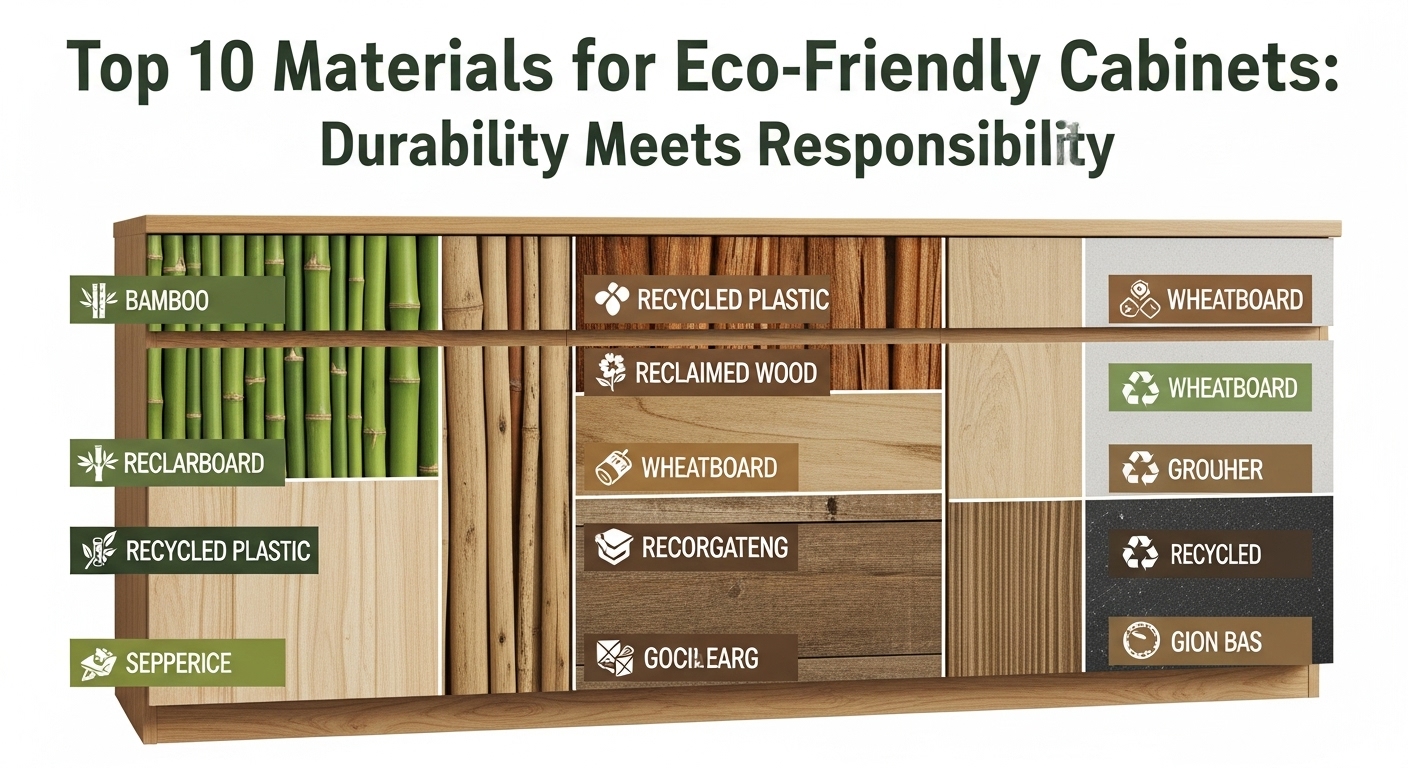
When we evaluate the durability of eco-friendly cabinets against traditional options, we find some intriguing differences. Eco-friendly materials often possess unique compositional qualities that can rival, or even exceed, those of conventional woods. However, we must consider factors like environmental conditions and maintenance requirements, which can impact longevity. An interesting perspective asserts that “the best choice balances sustainability with durability,” suggesting we shouldn’t prioritize one over the other. The choice may ultimately depend on individual preferences and needs.
Conclusion
In conclusion, selecting the right materials can make a significant impact on the sustainability of your cabinetry. The Top 10 Materials for Eco-Friendly Cabinets offer viable options that not only reduce environmental harm but also enhance your home’s aesthetic. By choosing sustainably sourced wood, recycled materials, or low-VOC finishes, you contribute to a healthier planet without compromising on style or durability. Therefore, when planning your next renovation, consider these eco-friendly choices to create a space that reflects your values and supports a greener future. With a little research and mindful decision-making, you can make a positive difference in both your home and the environment.
Frequently Asked Questions
What are the most popular eco-friendly materials for cabinets?
Popular eco-friendly materials for cabinets include bamboo, reclaimed wood, certified sustainable wood, plywood, and recycled metal.
Are eco-friendly cabinets more expensive than traditional ones?
Eco-friendly cabinets can be more expensive than traditional options, but they often offer greater durability and sustainability benefits, making them a worthwhile investment.
How can I tell if a cabinet material is truly eco-friendly?
Look for certifications such as FSC (Forest Stewardship Council) or Greenguard, which indicate sustainable sourcing and low chemical emissions.
Can I customise eco-friendly cabinets for my kitchen?
Yes, many manufacturers offer a range of customisation options for eco-friendly cabinets, including finishes, sizes, and styles to suit your kitchen design.
Are there any maintenance tips for eco-friendly cabinets?
To maintain eco-friendly cabinets, clean them with mild soap and water, avoid harsh chemicals, and apply natural oils or waxes to keep the wood nourished.
 2 Drawer Pack PS-2DB30-2-1 Forevermark Petit Sand
2 Drawer Pack PS-2DB30-2-1 Forevermark Petit Sand
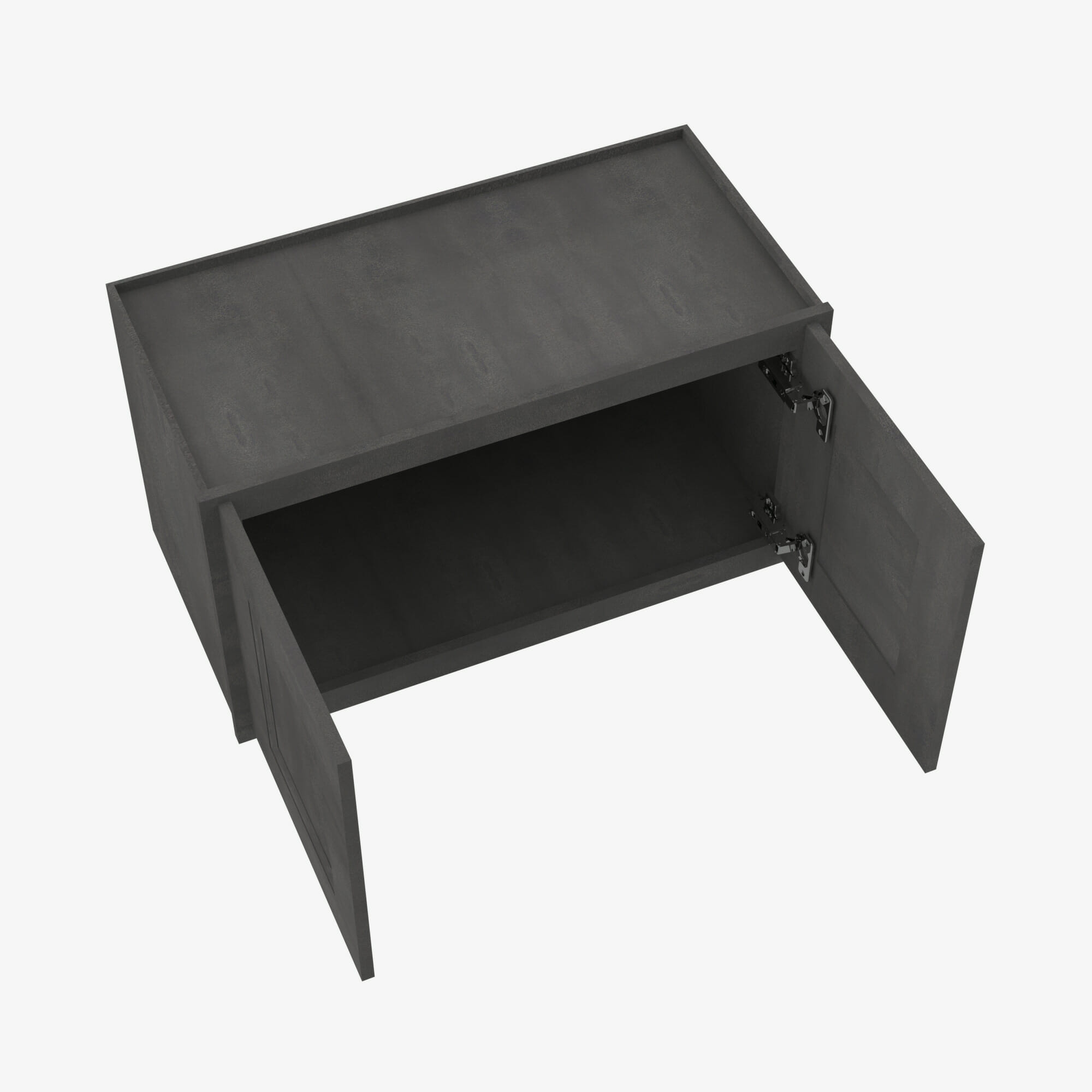 Stackable Cabinet AA-W2424B Forevermark Blaze Black Shaker
Stackable Cabinet AA-W2424B Forevermark Blaze Black Shaker
 Double (Butt) Door Cabinet SL-W3636BMGD Forevermark Signature Pearl
Double (Butt) Door Cabinet SL-W3636BMGD Forevermark Signature Pearl
